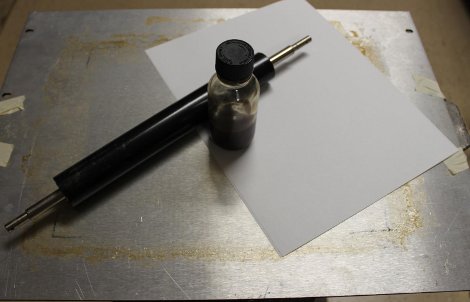
Full Spectrum Engineering has offered up a tutorial for their inkjet direct PCB kits that repurpose direct-to-CD capable inkjet printers (such as the Epson R280) to print etch-resistant ink straight onto copper clad board. This is easier and less error prone than some iron-on methods, especially for two-sided boards. Just print (no need to reverse the design), dry on a hot plate or in a toaster oven for a couple minutes, and your board’s ready for etching!
Homebrew methods exist for all of this, but for those who would rather move ahead with their design than spend time scrounging for the required bits,
the kits offer a pretty good value. They can also meet you halfway…say if you’re only lacking access to a laser cutter and just want the CD stencil…all of the parts are available individually or as a complete set: the resist ink cartridge, the stainless steel board-holding stencil, and a supply of double-sided copper clad boards precisely sized for the stencil (3.5 by 2.5 inches). The small board size is well within the limits of the freeware
Eagle Light Edition software.
Concerned about gunking up your nice inkjet with non-OEM ink? You can dedicate hardware to the job without breaking the bank. Many of the compatible printers are of the “free printer after rebate” bundle variety that can now be found inexpensively on Craigslist or eBay.
















